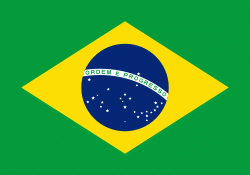Caxias do Sul (Caxias do Sul)
 |
The history of Caxias do Sul began before the arrival of the Italian immigrants when the region was being roamed by cattlemen and occupied by Indigenous peoples. The region was called "Indians' Field" in that period. The arrival of Italian immigrants, mostly farmers in search of a better life from the Veneto, Lombardy, Trento (northern Italy) as well as other regions in Italy, began in 1875 in Nova Milano. Although they received governmental support such as tools, supplies, and seeds, everything had to be reimbursed to the federal government.
Two years later, the colonial headquarters of the Indians' Field was given the name Caxias Colony. The town was created on July 20, 1890, and acknowledged in the same year, on August 24. Many economic cycles marked the evolution of the city throughout that century. The first one is connected to the most significant aspect of its cultural identity: the cultivation of vineyards and the production of wine, first for its own consumption, and later on, for commercialization.
On June 1, 1910, Caxias do Sul was elevated to the category of city. On the same day, the first train arrived connecting the region to the state capital. Although the immigrants were farmers, many of them worked in other economic sectors. They settled down, urbanized the region, and started a fast-paced process of industrialization.
In the countryside, subsistence agriculture concentrates on the cultivation of grapes, wheat, and corn. Home-based manufacturing started to emerge and overproduction was commercialized. Home-based manufacturing and Caxias do Sul evolved from having small home-based workshops to large scale factories, some of which are known internationally.
Nowadays, Caxias do Sul is an important city, and due to its industrious colonists, is home to vast vineyards, wineries, a varied industrial park, and a rich and dynamic market. Those attributes grant the land great importance; for such reason Caxias do Sul is often called "Pearl of the Colonies", is considered the center of the Italian presence in Southern Brazil.
Today Caxias do Sul is one of the region's central hubs, hosting some of Brazil's most diverse economies besides its size; with its industrial parks, vast vineyards, wine commerce, cattle and plantation farms give the land a further dimension.
Map - Caxias do Sul (Caxias do Sul)
Map
Country - Brazil
Currency / Language
| ISO | Currency | Symbol | Significant figures |
|---|---|---|---|
| BRL | Brazilian real | R$ | 2 |
| ISO | Language |
|---|---|
| EN | English language |
| FR | French language |
| PT | Portuguese language |
| ES | Spanish language |

















